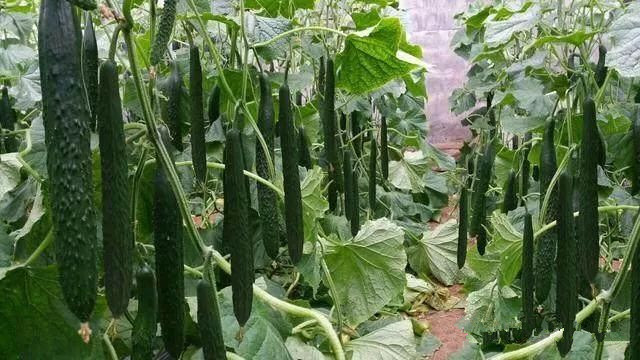"eight taboos" for High quality and High yield Management of Cucumber in greenhouse in Winter and Spring
There are eight taboos for planting cucumbers in winter and spring:
First, do not change the light angle of the greenhouse at will. At present, the angle of the solar greenhouse in which cucumber is cultivated has been scientifically demonstrated for a long time, and its north-south span, height and back slope angle should not be changed at will.

Second, avoid centralized fertilization when planting. All kinds of chemical fertilizers, especially nitrogen fertilizers, will produce a lot of harmful gases when they are wet and hot. If they are concentrated in the planting ditch, they can cause cucumber to burn roots and die seedlings.
Third, avoid planting too deeply. As we all know, cucumber grafting is for disease resistance, such as planting seedlings too deep, cucumbers will regenerate roots, lose the role of grafting, can not achieve the purpose of grafting.
Fourth, avoid overcast, rain and snow, do not pull grass grass. People often think that the temperature in the greenhouse will drop when the grass is pulled in overcast, rainy and snowy days. Therefore, overcast, rainy and snowy weather does not pull grass. In fact, this practice will do more harm, the temperature will only drop slowly, and the cucumber will not see the sun for a long time, which will lead to physiological disorder.
Fifth, avoid applying a large amount of nitrogen fertilizer in winter. Because nitrogen fertilizer will greatly decrease the water temperature and soil temperature and affect the normal growth of cucumber seedlings in the process of dispersion after meeting water.
Sixth, do not apply immature organic fertilizer. Organic fertilizer will soon produce alcohol after high temperature, and a large amount of ammonia will be produced in the process of fermentation. the light ones will decompose the indoor nitrogen fertilizer, and the heavy ones will make all the cucumber seedlings die in the greenhouse.
Avoid spraying at noon and in the evening. At noon, the temperature in the spray shed was too high, the water transpiration of the leaves was fast, and the medicine was evaporated before the medicine was absorbed. Especially manganese and zinc drugs, can cause drug damage. Spraying in the evening is just the opposite of noon, because it is not completely absorbed by cucumber leaves after spraying, it will decompose and fail due to moisture, which can not achieve the purpose of treatment, but aggravate the occurrence of the disease.
8. Avoid falling seedlings too short. Cucumber seedlings falling too short at one time will reduce the light exposure of leaves and affect the normal growth of cucumber seedlings.
- Prev

Planting techniques of Robinia pseudoacacia
Planting techniques of Robinia pseudoacacia
- Next

Pest control of Parthenocissus parthenocissus
The diseases of Parthenocissus are powdery mildew, leaf spot and anthracnose. Common aphid harm. Because of its strong resistance, Parthenocissus has less diseases and insect pests, but it also occurs from time to time, especially in the plum rain season, due to high temperature and high humidity, powdery mildew, leaf spot and anthracnose are easy to occur.
Related
- Fuxing push coffee new agricultural production and marketing class: lack of small-scale processing plants
- Jujube rice field leisure farm deep ploughing Yilan for five years to create a space for organic food and play
- Nongyu Farm-A trial of organic papaya for brave women with advanced technology
- Four points for attention in the prevention and control of diseases and insect pests of edible fungi
- How to add nutrient solution to Edible Fungi
- Is there any good way to control edible fungus mites?
- Open Inoculation Technology of Edible Fungi
- Is there any clever way to use fertilizer for edible fungus in winter?
- What agents are used to kill the pathogens of edible fungi in the mushroom shed?
- Rapid drying of Edible Fungi

